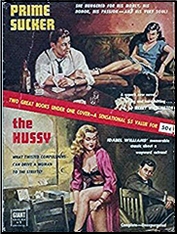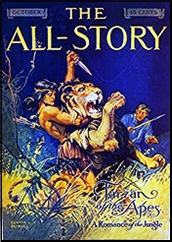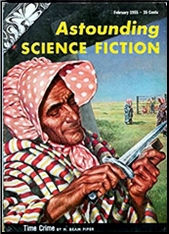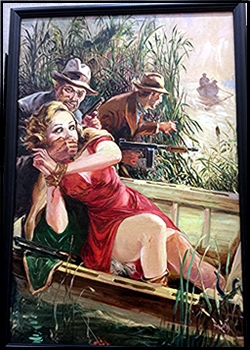REVIEWED BY DAVID VINEYARD:
RODERIC JEFFRIES writing as RODERICK GRAEME – Blackshirt Wins the Trick. Blackshirt #3, second series. Hutchinson, UK, hardcover, 1953/ No US edition. Independently published, paperback, 02 November 2017.
If Richard Verrell had not been taken in by an old, old trick, he would not have seen Janet again. And if he had not seen Janet…
Blackshirt lives!
In fact, it is almost impossible to kill him. Not that he’s the same man he was when Bruce Graeme, a literary agent, dreamed him up out of Raffles by way of Jimmy Dale, Michael Lanyard, and Charles Dickens back in 1922, or the way he was in the 1940’s when his son briefly took over for him, or even who he ended up being when he came roaring back in 1951 for a run all the way to 1969.
But, as William Vivian Butler said in his study of gentleman adventures and cracksmen, The Durable Desperadoes, Richard Verrill has a good claim on being the most durable desperado of them all.
Created in 1922, and after ten stories finally seeing print in hardcovers in 1925, Richard Verrill is a successful mystery writer who steals for the fun of it, for the challenge, the chase, and the adrenaline. Like Michael Lanyard, the Lone Wolf, he has a Dickensian backstory, though more the Artful Dodger than Oliver Twist, and like Jimmy Dale, the Gray Seal, he has a mysterious female voice on the phone who blackmails him into using his skills to help the downtrodden and grease the hinges of justice. Eventually Verrill and the voice of his conscience meet and marry.
As for that name, Blackshirt, it has nothing to do with politics. Verrill came before Mussolini’s Brown Shirts, and well before Oswald Mosely’s Blackshirts. Graeme’s Blackshirt takes his name from the fact he performs his crimes in dinner dress wearing a black dress shirt and a black hood.
Meanwhile writing as David Graeme Bruce got a little bored with his creation and penned Monsieur Blackshirt, about the adventures of Verrill’s ancestor in sixteenth centiury France.
Come 1939 it occurred to Graeme, that Blackshirt was getting a bit long in the tooth. By then Graeme had two popular series aside from Blackshirt, so he decided to retire his hero and instead unveiled Anthony Verrill, The Son ofBlackshirt. By that time England was in the war, and Graeme felt gentleman adventuring was a bit out of tune with the times, so Anthony’s adventures, written during the war, take place after the war ended, and to confuse things even more RAF ace Anthony discovers his father was in reality an Earl (with a Dickensian childhood), so Anthony is Lord Blackshirt.
Confused yet?
Believe me, it is just getting started.
And so things rested until 1950, when Graeme’s publisher decided that with a little updating the public might enjoy Blackshirt knocking around again. They did, and in early 1951 approached Graeme about bringing Blackshirt back in a more modern form.
Graeme had even less interest in the character than he had in 1939, but he did have a 25 year old son, Roderic, who could write and thus Richard Verrill is once again prowling the night in black dress shirt and hood.
You would be hard put to see him as a continuation though. Roderic, an even better writer than his successful father, picks up about three pages into Blackshirt’s first adventure, before the mysterious lady on the phone. She never makes an appearance and Blackshirt never reforms. He’s a cracksman, more of a professional than before, still wired for action, but not immune to profit either.
Now he is a highly successful mystery writer as well, and having never met his mother, there is no son and no Earldom.
There it is, a popular and well written series, that runs until 1969 and only really ends because writing as Roderic Jeffries, Roderic Graeme had bigger fish to fry, namely the popular Inspector Alvarez mysteries (which unlike Blackshirt, did see publication here).
And we are at last where we began, with Richard Verrill about to become reacquainted with a woman named Janet in the third of the new series. And what a re-acquaintance it proves to be.
Verrill is on holiday in St. Tropez before heading back to England for a friend’s wedding when he decides to try his hand at the casino, where he meets an attractive lady. In her company he wins big, and walking back with her to her hotel she and her accomplices mug him.
The French police are not sympathetic:
“I was not going home with her, I was escorting her to her hotel. I had every intention of coming away at once.â€
“You had?†murmured the inspector incredulously. He turned and regarded his subordinate. Then, “Pierre, call the doctor at once.â€
He misses the wedding, and shortly, still in St. Tropez, runs into an old friend who asks him to join him and his sister as they are a man short for a party they are invited to. Verrill is happy to be the fourth with his friend because they are invited to a ball being given by the very wealthy, very indiscriminate, and jewel-laden Mrs. Varnes, and Verrill is after all:
“Blackshirt, who stole for the joy of stealing; whose code of behaviour had convinced the police that, at least, he was a sport. The man who would steal a sixpenny tiepin in preference to a valuable diamond, if the tiepin could offer the greater thrills.â€
And there is where the complications set in, because also after the Varne’s jewels is the lady who mugged him, who he now recognizes as a ruthless rival from his past and a pleasant diversion Janet Dove (“Richard dear, if I hadn’t done it first, you’d have double-crossed me, wouldn’t you?â€), and as if that wasn’t enough he also finds himself pitted against the even more dangerous and more ruthless Peebles, the Jackdaw (“When their respective interests did not conflict, there was a strange bond between the two men.â€), another past rival, so Blackshirt is up to his neck in twists and turns as the three criminals compete, not always in gentlemanly or ladylike fashion, to win the trick as the title says.
Throw into the mix a suspicious reporter with blackmail on his mind who recognizes Verrill’s valet Roberts as a former felon and wonders why a successful writer would employ such a man, the legendary Darthweight pearls, and a vicious millionaire plotting a trap for Blackshirt and Janet …
Things move fast, but then they always do when Blackshirt is around.
The style is clipped, terse, always moving, the characters are believable, if only just, and the mood is light and playful with just enough of an edge to keep pages turning well into the night.
If you have never met the audacious Mr. Verrill, or at least this incarnation of him, you owe it to yourself to do so, with the twists coming right down to the last line of the final page.
Here is charm, wit, and breathless action served well chilled, a brut rather than a vintage perhaps, but there is nothing to be ashamed of in a delightful dessert wine.
Cheers.






